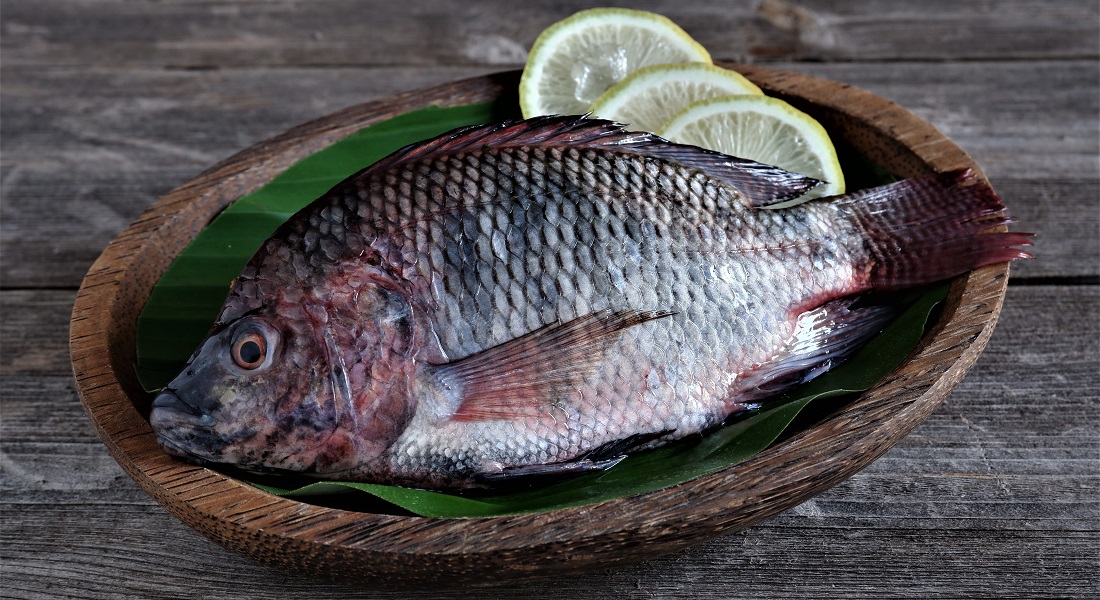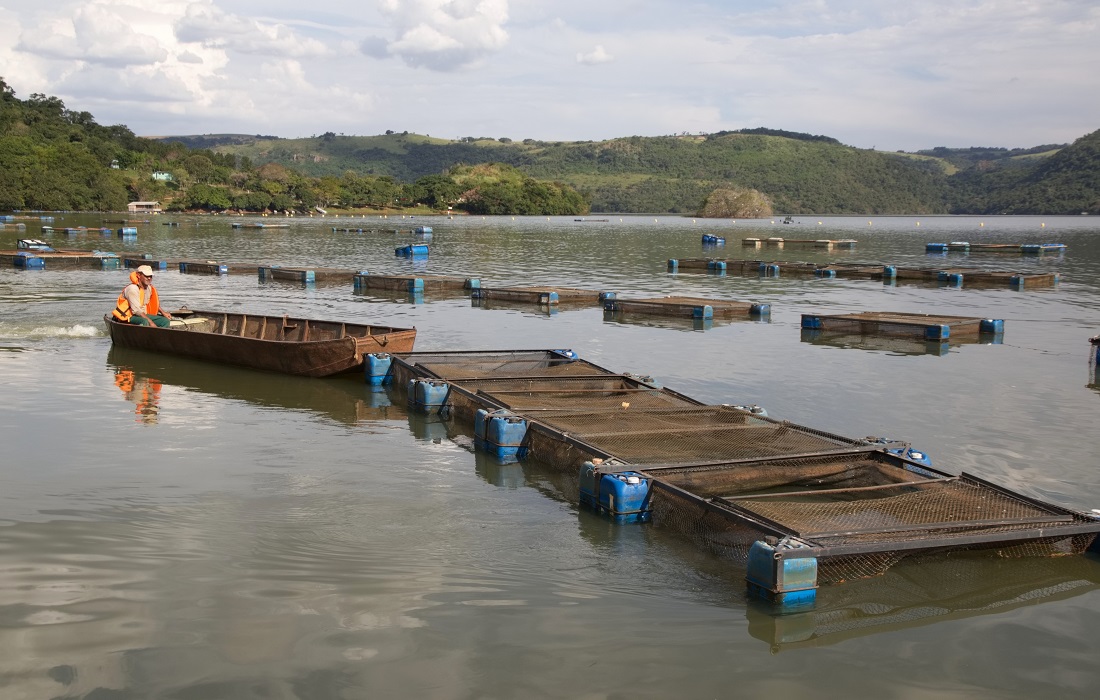Pinpointing the emergence of muddy flavors in your fish
Many people have experienced a muddy off-flavor in farmed fish. While the aquaculture industry has known about the problem for 20 years, it continues to impact the consumption of otherwise healthy and potentially sustainable fish. Now, University of Copenhagen researchers have been able to pinpoint exactly when the off-flavors emerge. And this can make it easier to deal with the compounds that turn people away from farmed fish.

Yuk! Musty, earthy or muddy-tasting fish is never going to go over well with the family. Perhaps you’ve tasted it in trout caught from a put-and-take pond. The off-flavor is typically found in farmed freshwater fish like trout and carp, but also in pangasius and tilapia, two of the most lucrative aquaculture species in the world.
The main culprit for the muddy taste is geosmin, a compound produced by aquatic microorganisms found in water where fish are raised. Though harmless to humans, the presence of geosmin is a hindrance to the production of farmed fish, which are an important source of protein globally.
"Geosmin is the compound that gives a beet root its characteristically earthy flavor. Except, that’s what one expects a beet to taste like. In fish, it is an undesirable off-flavor that discourages people from eating an otherwise healthy and often sustainable food. Fish farmers have known about the off-flavor for many years, but still find it a difficult problem to come to grips with," says Associate Professor Mikael Agerlin Petersen of the Department of Food Science.
Now, Petersen and his Danish and Brazilian research colleagues have been able to determine exactly how much geosmin is needed to affect the flavor of tilapia using refined measurement techniques. It is the first time that doing so has been possible. The studies were conducted on tilapia sourced from various aquaculture facilities in the state of Sao Paolo, Brazil.
Tiny amounts make for muddy-flavored fish
Geosmin is a compound formed by various bacteria and algae in water where fish are raised. As farmed fish absorb geosmin through their gills, the compound begins to accumulate. And once there is enough of it, it imparts a muddy taste to the fish flesh.
"Our study shows fish take up an off-flavor from geosmin, even when extremely low concentrations of it are present in the water. We find concentrations of it in fish that are 100 times greater than in the water. Due to a lack of methods for measuring such low concentrations, little has been done about it for a long time. But now we have the measuring techniques to do so," says Niels O. G. Jørgensen, Associate Professor emeritus at the Department of Plant and Environmental Sciences and co-author of the study.
The researchers used a combination of advanced chemical analyses and keen human noses. First, gas chromatography and mass spectrometry were used to identify and measure the presence of geosmin and other compounds in both the water and fish. Next, a panel of people trained to recognize geosmin tested which concentration of the compound was needed before it could be smelled and tasted in tilapia fillets.

Water quality is key
The results demonstrated that, as expected, geosmin is the main culprit, but that 2-methylisoborneol plays a significant role in the off-flavor as well. A number of other volatile organic compounds also contribute, though to a lesser extent. The researchers emphasize that all of the compounds are harmless to humans.
"These methods have let us determine the exact concentrations of different off-flavor compounds and how much of them is needed before people can taste them. So, in principle, producers can use it as a practical tool to determine whether their fish is on the safe side or not – either by performing analyses themselves or paying laboratories to do so," says Mikael Agerlin Petersen.
The study indicates that water quality plays a key role in the development of the compounds. In the Brazilian aquaculture farms that the researchers used for the case, fish live in large net cages situated in hydroelectric reservoirs.
"The problem in the Brazilian net cages is that, while there are thousands of fish, there is very little water circulation. When so many fish are gathered in a small area, uneaten feed and feces enter the water, creating local deterioration of the water quality We can see that wherever the water has not been cleaned well or that there is a lack of fresh water flow, geosmin quickly becomes a problem," says Niels O. G. Jørgensen.
Potentially sustainable fish
Foul-tasting farmed fish doesn’t just impact aquaculture industry revenue – it also affects the promotion of a more sustainable protein source.
Nearly 90% of the planet's wild fish stocks are either fished to the limit, overfished or completely exhausted. As such, aquaculture plays an increasingly important role in the world's food supply. Indeed, aquaculture now accounts for half of all fish consumed globally.
"The focus on sustainability in aquaculture is growing, but numerous challenges remain – including wastewater management and the sourcing of feed from wild fish stocks. However, it is possible to make the sector sustainable and climate-friendly both compared to wild-caught fish and other animal products. But nowhere is safe from the potential problem of muddy-tasting fish," says Niels O. G. Jørgensen.
Mikael Agerlin Petersen adds:
"And if you want to produce more fish for the world's population, you need to deliver something that has an acceptable taste if people are going to eat it. Which is why you need to know how to manage it."
ABOUT THE STUDY
- While geosmin is the main culprit according to the study, the compound 2-MIB and possibly a number of other volatile organic compounds give rise to the undesirable flavor in tilapia. The researchers identified 104 different VOCs in the fish flesh.
- The studies were conducted on Nile tilapia (Oreochromis niloticus) from six different breeding facilities in the state of Sao Paolo, Brazil. Tilapia make up nearly half of all farmed fish in Brazil.
- The research was conducted by Raju Podduturi, Niels O. G. Jørgensen and Mikael Agerlin Petersen from the University of Copenhagen, Grethe Hyldig from the Technical University of Denmark (DTU), Gianmarco da Silva David from Sao Paolo State Fisheries Institute and Reinaldo J. da Silva from São Paulo State University.
- The research article has been published in the scientific journal Food Research International.
Contact
Mikael Agerlin Petersen
Associate Professor
Department of Food Science
University of Copenhagen
dn@food.ku.dk
+45 23 72 30 67
Niels O. G. Jørgensen
Associate Professor Emeritus
Department of Plant and Environmental Sciences
University of Copenhagen
nbj@plen.ku.dk
+45 40 35 88 25
Maria Hornbek
Journalist
Faculty of Science
University of Copenhagen
maho@science.ku.dk
+45 22 95 42 83
